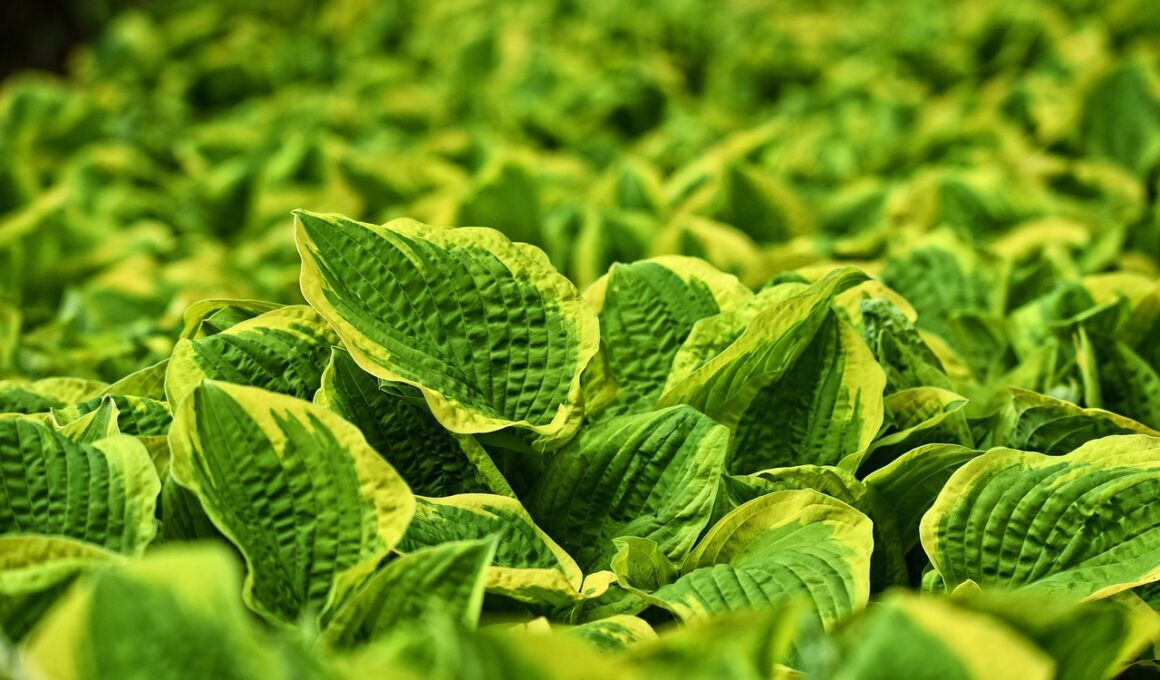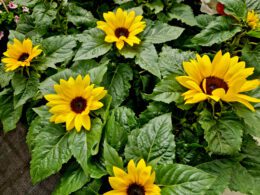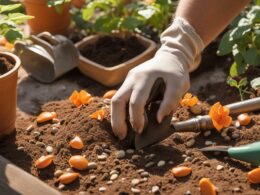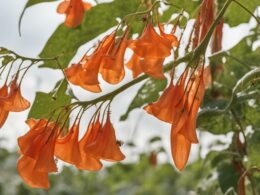Do you have hostas in your garden and are wondering whether or not you should cut them back for winter? It’s a hotly debated topic among gardeners, with strong opinions on both sides.
Some swear by cutting back hostas to promote healthier growth in the spring, while others argue that leaving them alone is the way to go.
Before you make a decision, it’s important to understand the factors involved. Factors such as climate, soil type, and the particular variety of hosta you have can all influence whether or not you should cut them back.
By weighing these factors carefully, you can make an informed decision that will help your hostas thrive come springtime.
So let’s dive into the debate and figure out what’s best for your garden.
Understanding the Debate
You might be wondering what the experts have to say about preparing your plants for the colder months. Well, when it comes to hostas, there is a debate over whether or not they should be cut back in the winter.
On one hand, some argue that cutting them back can help prevent disease and pest infestations. On the other hand, others argue that leaving them be can provide important benefits for the environment.
The benefits of cutting back your hostas include reducing the risk of disease and pest infestations. By removing dead foliage, you are removing potential breeding grounds for pests and diseases. This can help ensure that your hostas remain healthy and strong throughout the winter months. Additionally, cutting back your hostas can help prevent them from becoming too large and unwieldy, which can make them difficult to manage in the spring.
However, there are also risks associated with cutting back your hostas. For one, it can be a time-consuming and sometimes difficult task. Additionally, removing foliage can have a negative impact on the environment. Dead foliage provides important habitat and food sources for insects, birds, and other wildlife. By removing this foliage, you are potentially harming the ecosystem around your hostas.
Ultimately, the decision to cut back your hostas in the winter should be based on your personal preference and the specific needs of your plants.
Factors to Consider
Let’s explore some important aspects to keep in mind when preparing your plants for the colder months. When it comes to hostas, you need to consider the soil condition and the local climate. Hostas prefer moist soil, so make sure the soil isn’t too dry before cutting them back.
In addition, if you live in an area with harsh winters, it may be better to leave the foliage on the plant to provide protection from the cold. When deciding whether to cut back your hostas, consider the following:
- If you live in an area with mild winters, cutting back the foliage can help prevent the plant from becoming damaged by frost or snow.
- On the other hand, if you live in an area with harsh winters, leaving the foliage on the plant can help protect it from the cold and prevent the roots from freezing.
Remember that your goal is to keep your plants safe during the winter months. By taking the time to consider the soil condition and local climate, you can make an informed decision about whether to cut back your hostas or not.
Can Cutting Back Dahlias for Winter Improve Their Survival?
Cutting dahlias for winter can significantly improve their survival rate. By trimming back the foliage and stems to just a few inches above the ground, you help protect the tubers from frost and rot. It also prevents them from becoming weak and prone to diseases during the dormant period. Properly stored, these dormant tubers can be replanted in spring for a thriving dahlia garden.
How to Cut Back Hostas
When it comes to cutting back hostas, there are three key factors to keep in mind: timing, tools, and technique.
First, you’ll need to determine the right time to cut back your hostas based on your location and climate.
Then, make sure you have the right tools on hand, such as sharp pruning shears or a garden knife.
Finally, use proper technique to avoid damaging the plants and encourage healthy growth in the spring.
Timing
Now is the perfect time to prepare your garden for the colder months ahead, and cutting back your hostas is an important part of that process. When deciding when to cut back your hostas, there are a few things to consider:
-
Early vs. late: Some gardeners prefer to cut back their hostas early in the fall, while others wait until the first frost. Cutting back too early can leave the plant vulnerable to damage from pests and disease, while waiting too long can result in damage to the foliage.
-
Weather considerations: If you live in an area with harsh winter weather, it’s important to cut back your hostas before the first snowfall. Snow and ice can weigh down the foliage and cause damage to the plant.
-
Type of hosta: Different varieties of hostas may require different timing for cutting back. Some will die back naturally on their own, while others may need to be cut back manually.
-
Personal preference: Ultimately, the timing of cutting back your hostas will depend on your personal preference and gardening style. Some gardeners prefer to leave the foliage up throughout the winter, while others like to have a clean slate for the spring.
By considering these factors, you can determine the best timing for cutting back your hostas to ensure a healthy and vibrant plant come spring.
Tools
The key to successfully preparing your garden for the colder months ahead lies in having the best tools at your disposal. When it comes to cutting back your hostas for winter, you want to make sure you have the right equipment to do the job efficiently and safely. Here are some of the best tools and maintenance tips to keep in mind:
| Tool | Description |
|---|---|
| Pruning Shears | Ideal for cutting back smaller stems and leaves. Make sure to choose a pair with sharp blades. |
| Hedge Trimmers | Perfect for cutting back larger hostas or trimming multiple plants at once. Choose a lightweight option with adjustable blades. |
| Garden Gloves | Protect your hands from cuts and scratches while working with sharp tools. Choose gloves made from durable materials like leather or synthetic fabrics. |
| Garden Bag | Use a sturdy bag to collect the cuttings and debris from your hostas. This will make cleanup much easier and keep your garden looking neat. |
| Lubricating Oil | Keep your tools in top condition by applying a small amount of lubricating oil to the blades after each use. This will prevent rust and keep them sharp for longer. |
By using these tools and following proper maintenance tips, you can ensure that your hostas are cut back properly for the winter months. Remember to always prioritize safety while working in your garden, and take the necessary precautions to avoid injury. With the right tools and techniques, you can keep your garden healthy and thriving all year round.
Technique
In order to properly prepare your hostas for winter, it’s important to master the technique of cutting them back at the right time. While there are benefits to cutting back your hostas, there are also some risks involved.
One of the benefits of cutting back your hostas is that it can help promote healthier growth in the long term. By removing dead or diseased leaves, you can prevent the spread of disease to other parts of the plant.
However, cutting back your hostas too early can also have long term effects on their overall health. If you cut them back too soon, you risk exposing them to frost damage and other harsh winter conditions.
Ultimately, it’s important to strike the right balance between preparing your hostas for winter and protecting them from potential damage.
Alternatives to Cutting Back
If you want to avoid cutting back your hostas for winter, there are several alternatives you can try.
First, consider mulching around the base of the plant to provide extra insulation against the cold.
Another option is to cover the plant with a layer of burlap or a frost blanket to protect it from harsh weather.
Finally, you can simply leave the plant alone and let it go dormant on its own.
Mulching
Don’t miss out on the opportunity to give your beloved hostas a warm and cozy blanket of protection during the chilly months ahead. Mulching is a great alternative to cutting back your hostas for winter.
Winter protection is crucial for hostas, and organic mulch can help keep them safe and healthy. Organic mulch, such as leaves or straw, can be spread around the base of the hostas before the first frost. This will help insulate the roots and prevent them from freezing.
Mulching also helps retain moisture in the soil, which is important during the winter months when the ground can become dry. By using organic mulch, you are not only protecting your hostas but also improving the soil and reducing weed growth.
So, don’t hesitate to give your hostas the protection they need with a layer of cozy mulch.
Covering
You can keep your plants cozy throughout the winter months by covering them with a protective layer. There are different options for covering your hostas, each with its own pros and cons.
One option is to cover them with a layer of straw or leaves. This can be effective in protecting them from the cold, but it can also attract rodents looking for a warm place to nest.
Another option is to use burlap or frost cloth to cover them. This can provide good protection while still allowing some air flow, but it may not be as effective in extreme cold temperatures.
Regardless of which covering option you choose, it’s important to make sure that your hostas are well-watered before the first frost and that they are completely dry before covering them. This will help prevent any potential rot or mildew issues.
Remember to remove the cover in the springtime as soon as the threat of frost has passed. With the right covering and care, your hostas can survive the winter and thrive again in the spring.
Leaving Them Alone
Leaving your plants alone during the winter months can be a hands-off approach to allow for natural growth and regeneration. By not cutting back your hostas, you’re allowing them to go through their natural cycle of dying back to the ground and then regrowing when spring comes around. This can lead to benefits such as increased hardiness and stronger root systems.
However, there are some tips for leaving your hostas alone during the winter. It’s important to clean up any dead or diseased foliage to prevent the spread of disease. Additionally, a layer of mulch can help protect the plants from extreme cold temperatures.
By following these tips and allowing your hostas to go through their natural cycle, you can have healthy and thriving plants come springtime.
Conclusion: Making the Right Decision for Your Garden
It’s that time of year again when you need to think about what’s best for your garden as the weather cools down. One of the decisions you need to make is whether or not to cut back your hostas for winter.
As we discussed earlier, there are pros and cons to both leaving them alone and cutting them back. Ultimately, the decision comes down to personal preference and what will work best for your garden.
If you choose to leave your hostas alone, make sure to remove any dead leaves and debris from around the plants to prevent disease. Hostas are hardy plants and can survive the winter without much help, but they may not look their best in the spring. If you prefer a tidy garden, you may want to consider cutting them back in the fall. This will result in fresh foliage in the spring and a neater appearance over the winter.
In the end, the decision about whether or not to cut back your hostas for winter is up to you. Consider the pros and cons, and think about what will work best for your garden and your personal preferences. Whether you choose to leave them alone or tidy them up, your hostas will survive the winter and come back stronger in the spring.
Frequently Asked Questions
Can hostas survive winter without being cut back?
To ensure your hostas survive winter, it’s important to have overwintering strategies in place. This means protecting them from harsh winter conditions and frost damage.
One effective strategy is mulching, which helps retain moisture and insulate the soil.
Hostas can survive winter without being cut back, but it’s important to remove any dead or diseased leaves to prevent them from harboring pests or diseases.
By taking steps to protect your hostas during the winter months, you can ensure they come back strong and healthy in the spring.
How often should hostas be cut back in a year?
To keep your hostas healthy and thriving, it’s important to prune them regularly throughout the year. Pruning techniques vary depending on the season, but generally involve removing dead or damaged leaves and cutting back any overgrown areas. This not only keeps your hostas looking tidy, but also promotes new growth.
As winter approaches, it’s important to take overwintering tips into consideration, such as mulching around the base of the plant to protect the roots from freezing temperatures. While some gardeners choose to cut back their hostas before winter, others prefer to leave them intact for added protection. Ultimately, the decision on how often to prune your hostas will depend on your personal preference and the specific needs of your plants.
Can I cut back hostas in the spring instead of fall?
When it comes to pruning your hostas, spring is a great time to get started. Spring pruning can be an excellent alternative to cutting back your hostas in the fall. This is especially true if you live in a region with harsh winters.
By waiting until spring, you can give your hostas a little extra protection during the winter months. When spring arrives, you can trim away any dead or damaged leaves, and shape the plant to your liking. This will help your hostas grow strong and healthy throughout the year.
So if you’re looking for an alternative method to fall pruning, give spring pruning a try!
Will cutting back hostas affect their growth in the next season?
To ensure optimal growth of your hostas, it’s important to consider the effect of pruning techniques. Pruning can stimulate growth and improve overall plant health, but timing is crucial.
The best time to prune hostas is in the spring, before new growth emerges. Cutting back hostas in the fall can result in damage to the plant and may negatively impact growth in the next season.
To avoid this, wait until spring to prune your hostas. By doing so, you’ll encourage healthy growth and ensure your hostas thrive throughout the year.
Are there any specific tools I need to use to cut back hostas?
To cut back your hostas for winter, you can use hand pruners, shears, or scissors. It’s important to use sharp tools to make clean cuts and avoid damaging the plant.
You can do this yourself, but if you’re not comfortable using these tools, you may want to consider hiring a professional landscaper. It’s always better to be safe than sorry and avoid any potential accidents.
Remember to wear gloves and protective eyewear to protect yourself from any debris while working on your hostas.
Conclusion
So, should you cut back your hostas for winter? It ultimately depends on your personal preference and the specific needs of your garden.
If you live in a colder climate with harsh winters, cutting back your hostas can help protect them from frost damage. However, if you live in a milder climate or simply prefer the look of your hostas during the winter months, leaving them uncut may be a better option.
Regardless of your decision, it’s important to remember to properly care for your hostas throughout the year by providing adequate water, fertilizer, and sunlight. By understanding the factors to consider and how to properly cut back your hostas, you can make the best decision for the health and appearance of your garden.









